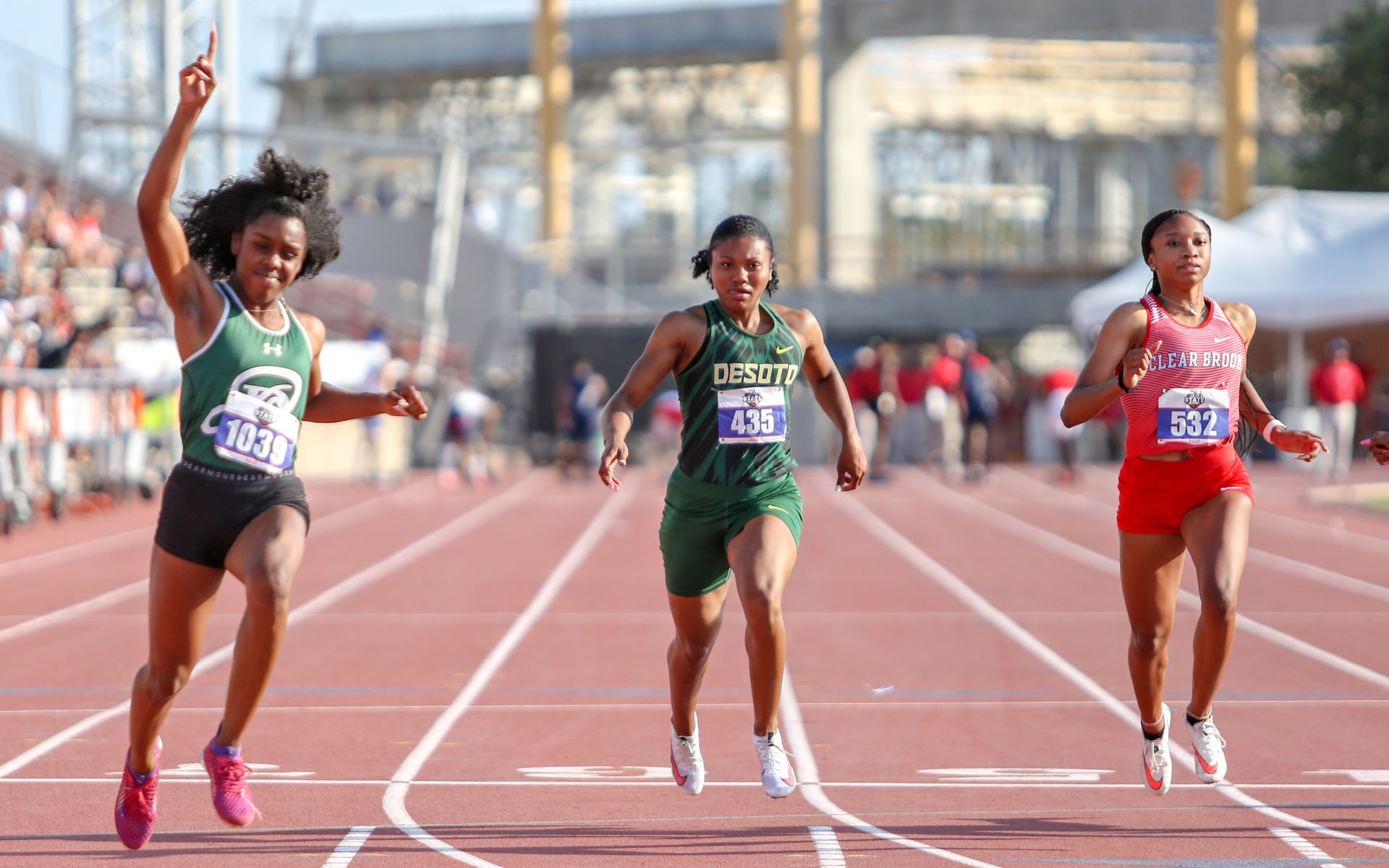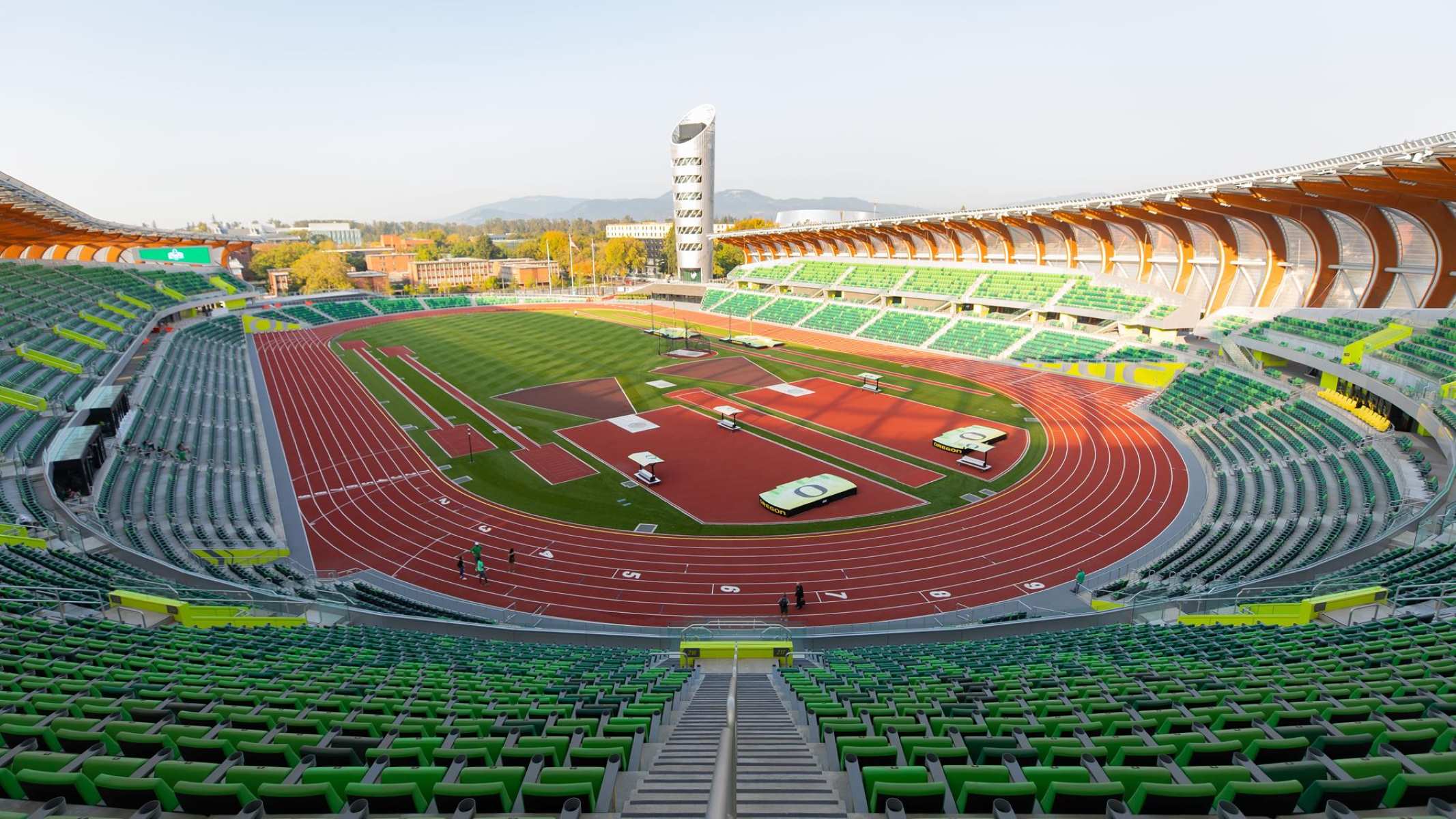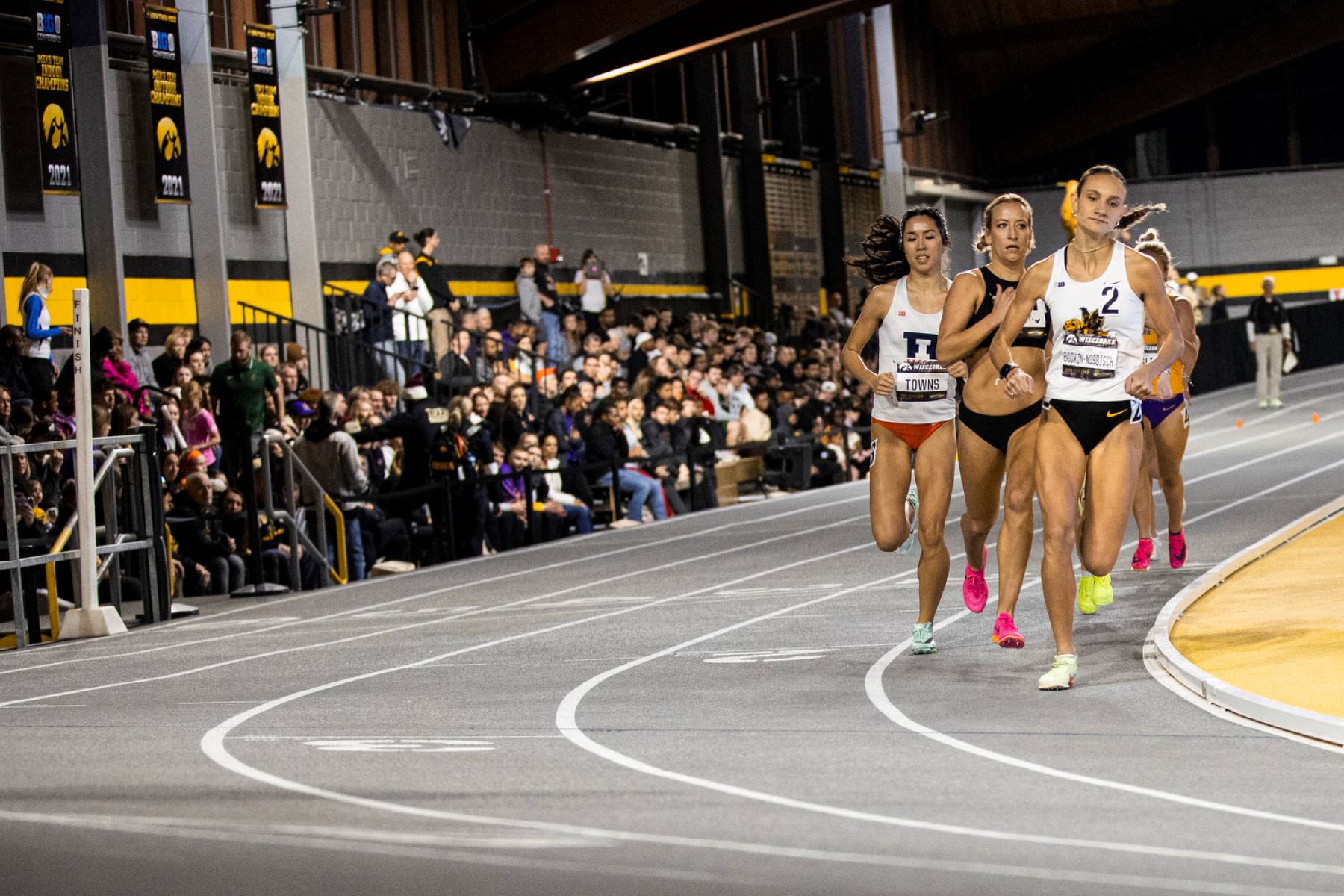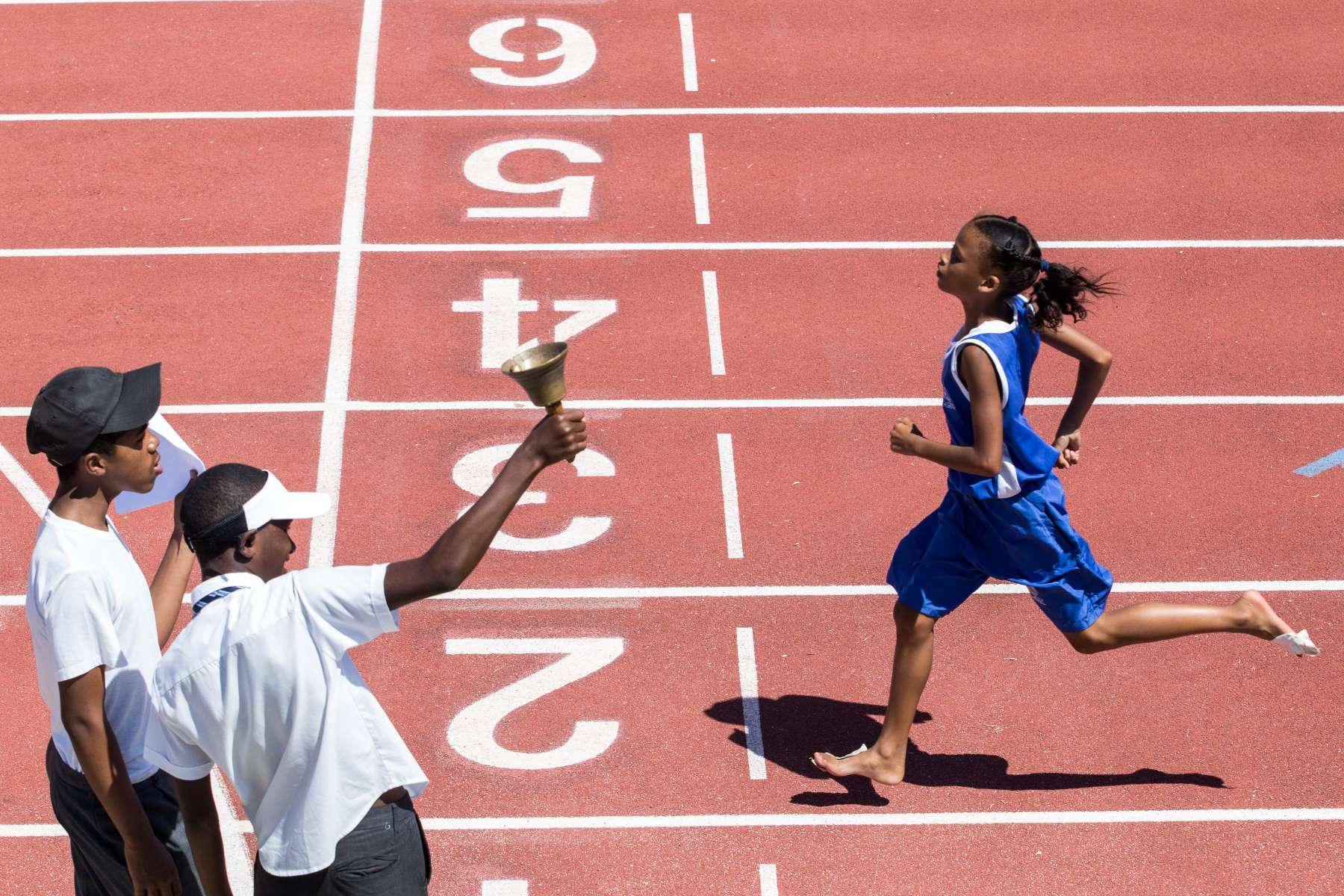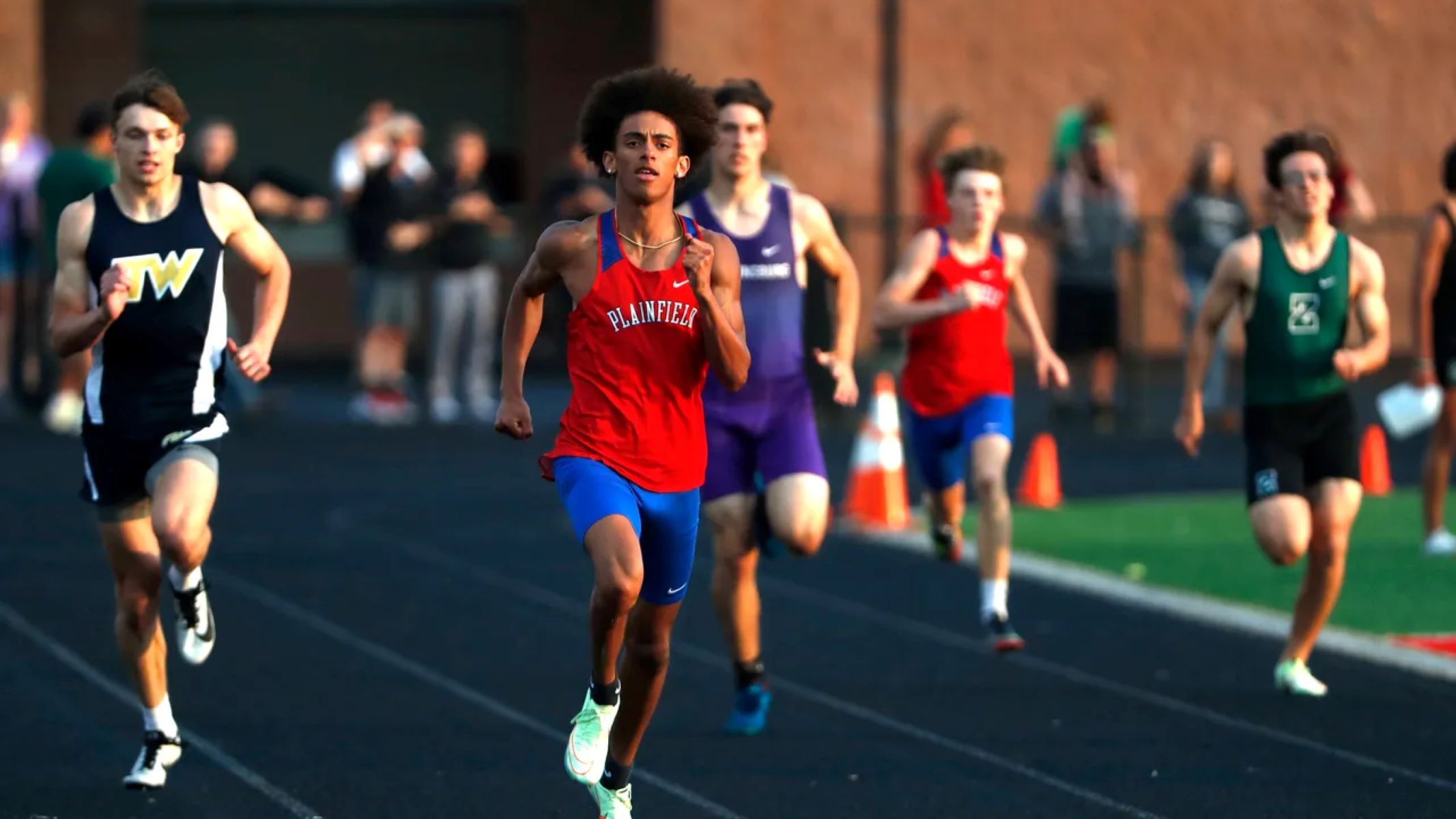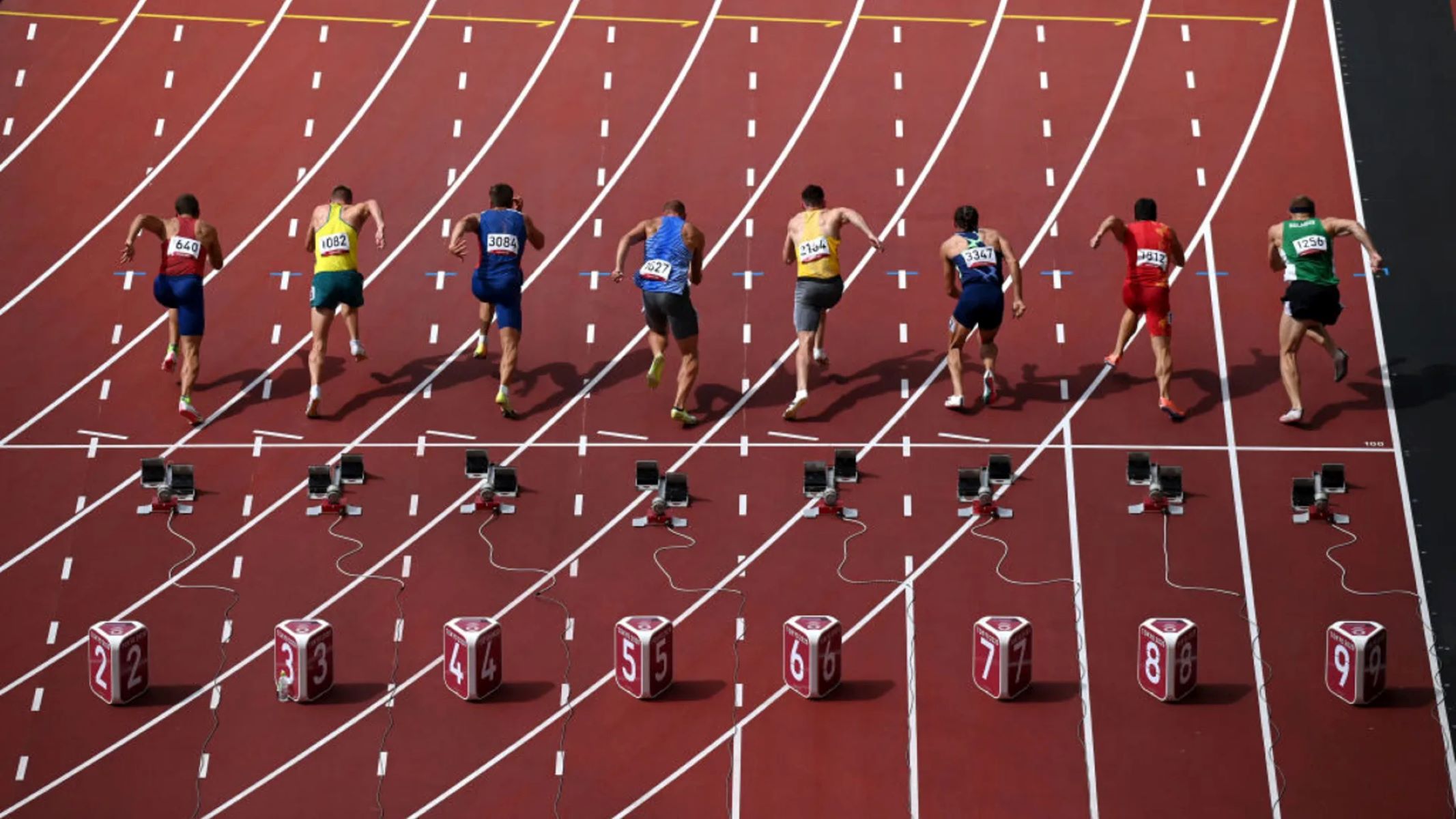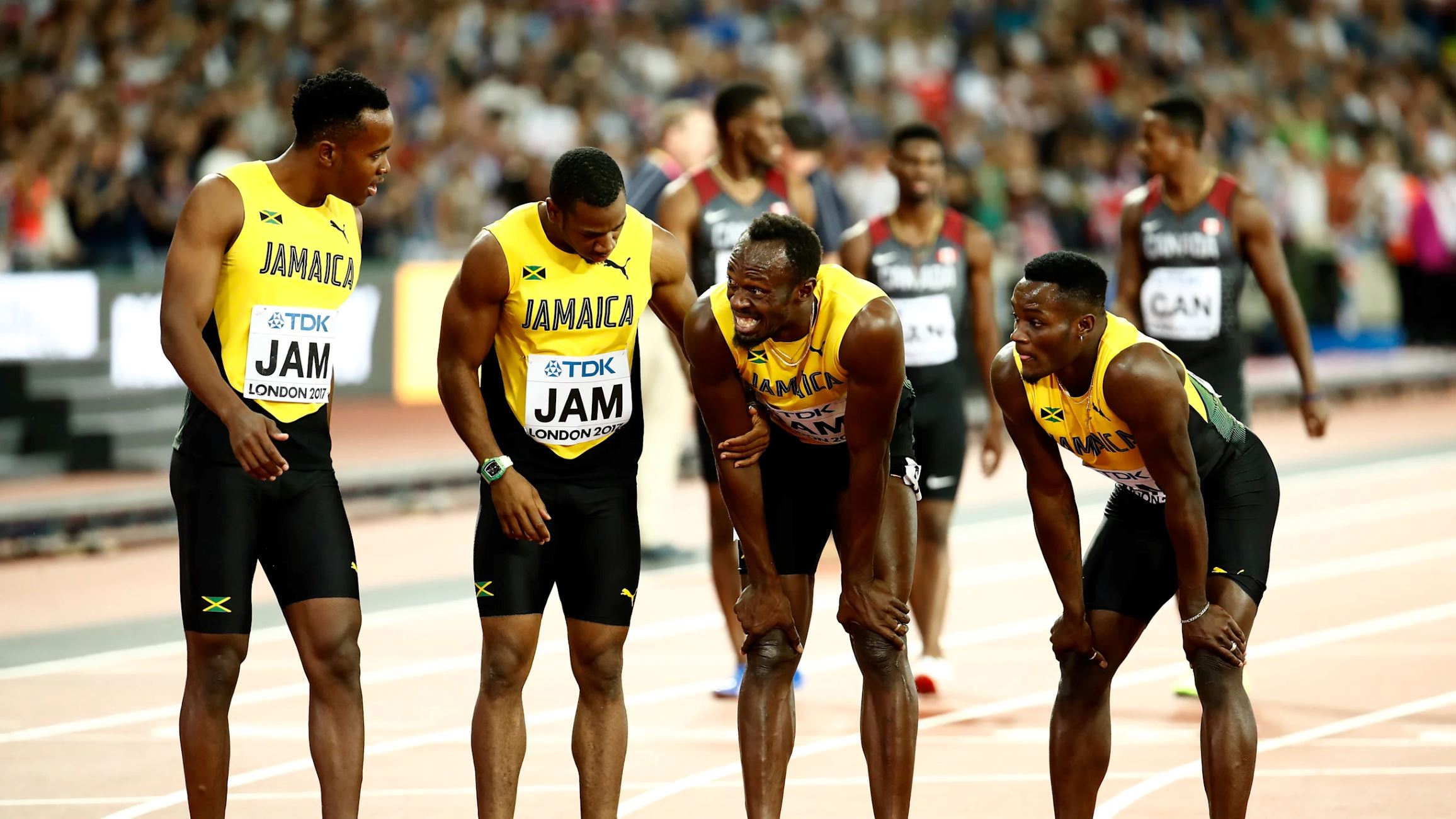Home>Misc>Featured>How Many Events In High School Track And Field
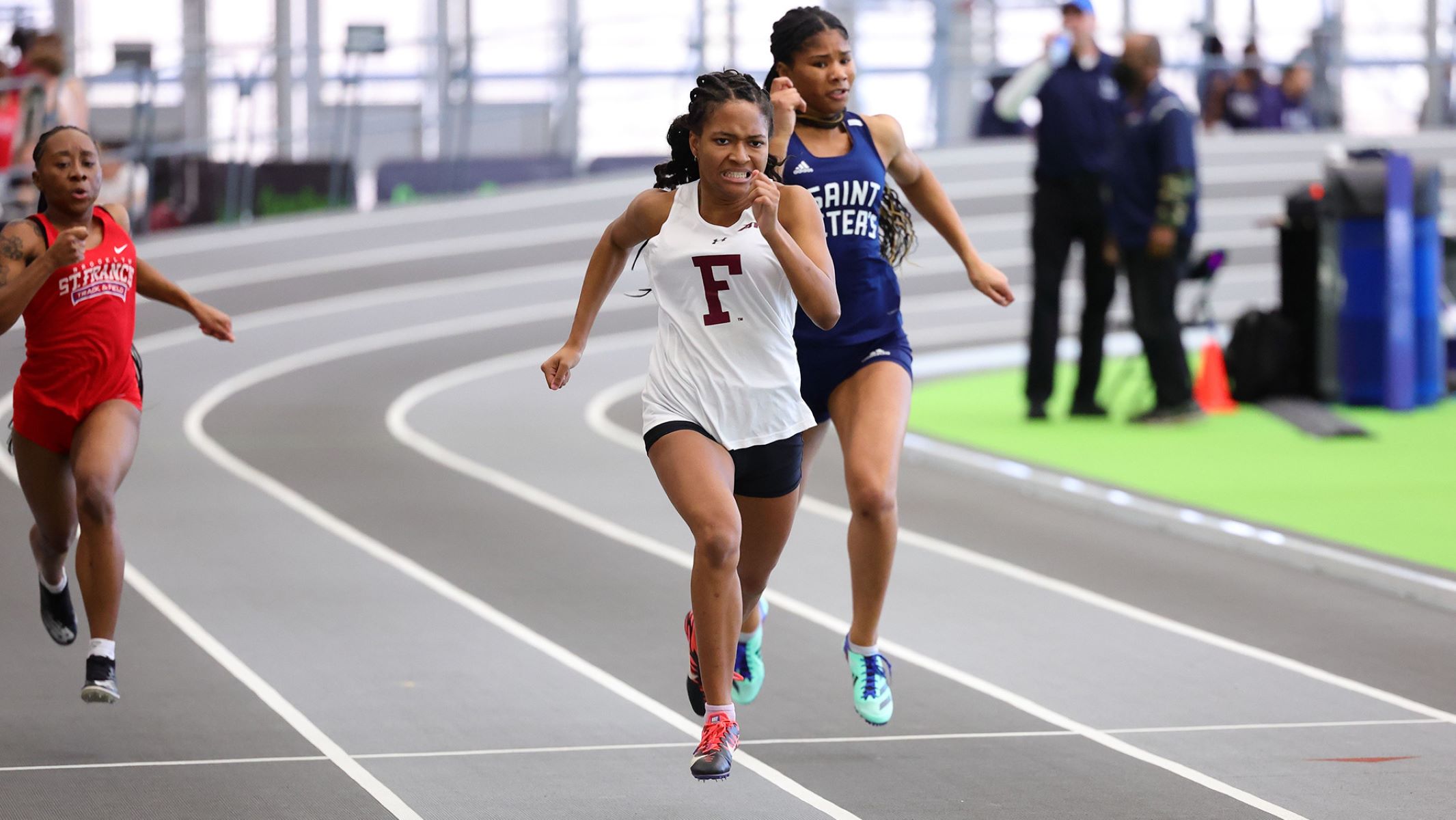

Featured
How Many Events In High School Track And Field
Published: November 12, 2023
Discover how many events are held in high school track and field, including featured events. Get insights into the exciting world of high school athletics.
Introduction
Track and field is a popular sport in high schools across the country, offering students the opportunity to showcase their athleticism and compete against their peers. One of the key aspects of track and field is the variety of events available for athletes to participate in. Whether it’s sprinting, jumping, hurdling, or throwing, there are numerous disciplines that cater to a wide range of talents and abilities.
The number of events in high school track and field can vary, but generally, there are several categories that encompass the different areas of competition. These include sprint events, distance events, hurdle events, relay events, jumping events, throwing events, and combined events. Each category presents unique challenges and requires specific skills, making track and field a diverse and exciting sport for participants and spectators alike.
In this article, we will explore each category of events in high school track and field, providing insights into their rules, techniques, and the physical demands they place on athletes. Whether you’re a student-athlete, a parent, or simply curious about the sport, this guide will give you a comprehensive overview of the events and what to expect when watching or participating in high school track and field.
Sprint Events
Sprint events in high school track and field are all about speed and explosive power. These races typically range from short sprints, such as the 100-meter dash, to longer sprints like the 400-meter dash. The objective is simple: be the first to cross the finish line.
The 100-meter dash is one of the most exciting events in track and field. Athletes explode out of the starting blocks and use their maximum speed to cover the distance in a matter of seconds. It requires a combination of explosiveness, power, and technique.
As the distance increases, so does the strategy. In the 200-meter dash, athletes need to pace themselves slightly while maintaining their speed. The 400-meter dash, also known as a quarter-mile race, requires more endurance and proper race tactics, as it is a full lap around the track.
Proper form and sprinting technique are crucial in these events to maximize speed and efficiency. Athletes must learn how to position their body, drive their knees, and coordinate their arm movements for optimal performance. Speed workouts, plyometric training, and strength training are often incorporated into athletes’ training regimens to improve their explosiveness and power.
Sprint events not only showcase an athlete’s raw speed but also their ability to handle the pressure of intense competition. The explosive starts and close finishes make these races thrilling for both participants and spectators alike.
Distance Events
Distance events in high school track and field are all about endurance and tactical racing. These races typically range from the 800-meter run to the longer 3200-meter run. Unlike sprint events, distance events require athletes to maintain a steady pace for a prolonged period of time.
The 800-meter run is a demanding event that combines elements of speed and endurance. Athletes need a blend of speed to navigate the first lap and endurance to maintain their pace for the second lap. Strategy plays a crucial role in this race, as athletes must decide when to conserve energy and when to make a move for the finish line.
The 1600-meter run, also known as the mile, is a classic distance event. It tests an athlete’s ability to maintain a consistent pace over four laps. Endurance, mental toughness, and race strategy are key factors in achieving success in this event.
For those seeking an even longer challenge, there is the 3200-meter run. This event requires exceptional endurance and mental fortitude as athletes navigate eight grueling laps around the track.
Training for distance events involves a balance between mileage, speed workouts, and tempo runs. Athletes need to develop both aerobic and anaerobic endurance to perform at their best. Long distance runs help build a strong cardiovascular base, while interval training and hill repeats improve speed and stamina.
Distance events are not just about the physical aspect; they also promote mental resilience and strategic thinking. Athletes must gauge their effort throughout the race, maintain a steady pace, and strategize when to make their moves. The combination of physical and mental challenges makes distance events a true test of an athlete’s abilities.
Hurdle Events
Hurdle events in high school track and field require a unique combination of speed, agility, and coordination. Athletes must navigate a series of hurdles placed along the track while maintaining their momentum and rhythm.
The two most common hurdle events in high school track and field are the 110-meter hurdles for boys and the 100-meter hurdles for girls. In these events, athletes sprint down the track and clear ten evenly spaced hurdles. Precision and timing are crucial to clear the hurdles efficiently without losing speed.
In addition to the 110-meter/100-meter hurdles, there is also the 300-meter hurdles event. This event requires athletes to clear eight hurdles placed along the track, with a longer race distance that tests their endurance as well as their hurdling technique.
Proper technique is essential for success in hurdle events. Athletes must learn to maintain an upright posture, extend their lead leg over the hurdle, and utilize a quick trail leg action. Practice sessions often involve drills to work on stride pattern, clearance technique, and rhythm between the hurdles.
Hurdle events not only require physical prowess but also mental focus. Athletes need to maintain concentration and adjust their stride pattern to clear each hurdle smoothly. The slightest misstep can result in hitting the hurdle and losing valuable time.
Training for hurdle events involves a combination of speed work, hurdle drills, and strength training. Athletes focus on developing explosive power in their legs and core strength to generate the necessary force to clear the hurdles swiftly.
Watching hurdle events can be captivating, as athletes gracefully leap over the hurdles with precision and speed. The combination of athleticism, agility, and technique required in hurdle events make them a thrilling spectacle in high school track and field.
Relay Events
Relay events in high school track and field add a sense of teamwork and camaraderie to the sport. Athletes come together to form a team and compete against other schools in various relay races, passing a baton from one runner to another.
The most common relay events in high school track and field are the 4×100-meter relay and the 4×400-meter relay. In the 4×100-meter relay, four athletes each run 100 meters before passing the baton to the next runner. The 4×400-meter relay follows a similar format, but with each athlete running 400 meters.
Relay events require precise baton exchanges, where athletes must coordinate their speed and timing to hand off the baton smoothly. Proper handoff techniques, such as the blind handoff or open handoff, are practiced to ensure seamless transitions between runners.
Strategy is a crucial aspect of relay events. Coaches must select athletes with the right combinations of speed, endurance, and baton-handling skills for each leg of the race. Athletes need to time their start and finish, making sure they enter the exchange zone at the right moment to receive or pass the baton.
Training for relay events involves practicing baton exchanges, working on transitions, and improving running speed and endurance. Relay teams undergo specific drills to fine-tune their handoff techniques and practice running as a cohesive unit.
Relay events often result in exciting finishes, as athletes sprint down the track, pushing themselves to give their team a winning advantage. The element of teamwork and the reliance on each athlete’s contribution make relay events a thrilling and memorable part of high school track and field.
Jumping Events
Jumping events in high school track and field showcase an athlete’s jumping ability, explosiveness, and technique. There are several jumping events, including the long jump, high jump, triple jump, and pole vault.
The long jump requires athletes to sprint down the runway and launch themselves into the air, propelling their bodies as far as possible before landing in a sandpit. It combines speed, power, and technique to achieve maximum distance.
High jump athletes strive to clear a horizontal bar by jumping over it without knocking it down. They use a curved approach to generate the necessary height to clear the bar. Flexibility, coordination, and jumping mechanics are essential in this event.
The triple jump is a demanding event that combines a hop, a step, and a jump. Athletes must perform these three movements in quick succession to achieve maximum distance. It requires a combination of speed, power, and precise timing.
Pole vault is a thrilling event where athletes propel themselves over a bar using a flexible pole. Athletes use a run-up to generate speed and plant the pole before launching themselves over the bar. Pole vault requires strength, agility, and impeccable technique.
Training for jumping events involves focusing on plyometric exercises, strength training, and technical drills. Athletes work on explosive power, flexibility, and jumping technique to maximize their performance in each event.
Jumping events can provide some of the most exciting moments in track and field, as athletes soar through the air and achieve impressive heights or distances. The combination of athleticism, technique, and bravery on display in these events make them a highlight of high school track and field competitions.
Throwing Events
Throwing events in high school track and field require a combination of strength, technique, and coordination. These events include shot put, discus throw, javelin throw, and sometimes hammer throw.
The shot put involves throwing a heavy metal ball as far as possible. Athletes must generate power from their lower body and transfer it through their upper body while maintaining proper throwing technique. The goal is to achieve maximum distance.
The discus throw requires athletes to spin and release a discus in a controlled and explosive manner. Technique plays a crucial role in this event, as athletes must generate rotational power and release the discus at the right moment for optimal distance.
In the javelin throw, athletes hurl a spear-like object, called a javelin, as far as possible. Proper grip, approach, and release are vital in achieving a successful throw. The javelin throw tests an athlete’s strength, speed, and throwing mechanics.
Training for throwing events involves a combination of strength training, technique drills, and explosive exercises. Athletes focus on building upper body strength and increasing their ability to generate power through their throwing motion.
Throwing events require athletes to harness their strength and translate it into precise and powerful throws. The ability to combine technique, strength, and coordination makes these events a test of both physical and mental prowess.
Watching throwing events can be impressive, as athletes demonstrate their power and precision while launching objects through the air. These events are integral to the excitement and diversity of high school track and field competitions.
Combined Events
Combined events in high school track and field combine multiple disciplines into one competition. The most well-known combined event is the decathlon for boys and the heptathlon for girls. These events test an athlete’s versatility, endurance, and overall athleticism.
The decathlon consists of ten events spread over two days. These events include the 100-meter dash, long jump, shot put, high jump, 400-meter dash, 110-meter hurdles, discus throw, pole vault, javelin throw, and 1500-meter run. Competitors accumulate points based on their performance in each event, and the athlete with the highest total score emerges as the winner.
The heptathlon involves seven events and is conducted over two days. The events included in the heptathlon are the 100-meter hurdles, high jump, shot put, 200-meter dash, long jump, javelin throw, and 800-meter run. Similarly, athletes earn points based on their performances, and the highest overall score determines the winner.
Combined events require athletes to excel in a wide range of skills, including sprinting, jumping, throwing, and endurance. Training for these events involves a balanced approach, with athletes working on their speed, technique, strength, and versatility.
Competing in a decathlon or heptathlon requires mental fortitude, as athletes endure two full days of intense competition across multiple events. The ability to maintain focus, recover between events, and adapt to different disciplines is crucial for success in combined events.
Watching combined events is a true testament to an athlete’s all-around abilities. The dramatic shifts in skill sets from sprinting to throwing to jumping make these events captivating for spectators and challenging for athletes.
Combined events are the ultimate test of athleticism in high school track and field, showcasing the well-rounded abilities and determination of the participants.
Conclusion
High school track and field offers a wide range of events that cater to athletes of varying abilities and interests. Whether it’s the thrill of sprinting, the endurance required in distance events, the precision of hurdle events, the teamwork of relay events, the athleticism of jumping events, the strength in throwing events, or the versatility of combined events, there is something for everyone to enjoy in this sport.
Each event brings its own unique challenges and rewards, demanding different physical skills and mental focus from the athletes. From the explosive speed of sprint events to the strategic pacing of distance races, from the precision of hurdle clearances to the power of throws and jumps, each event requires athletes to push their limits and strive for excellence.
High school track and field not only provides a platform for athletes to showcase their talents, but it also instills values such as discipline, perseverance, teamwork, and goal-setting. Athletes learn the importance of hard work, dedication, and sportsmanship as they train and compete in their chosen events.
Furthermore, track and field events serve as a source of excitement and entertainment for spectators. The cheers and encouragement from the crowd add to the thrilling atmosphere of meets and showcases the community’s support for athletes’ achievements.
Whether you’re a participant, a spectator, or simply curious about the sport, the world of high school track and field offers a captivating and dynamic experience. It is a sport that celebrates athleticism, determination, and the pursuit of personal excellence. So, lace up your running shoes, grab a seat in the stands, or join a team, and immerse yourself in the exciting world of high school track and field.
